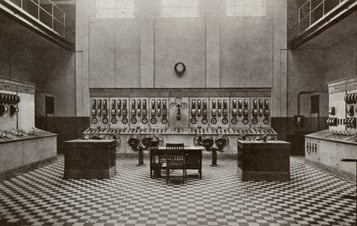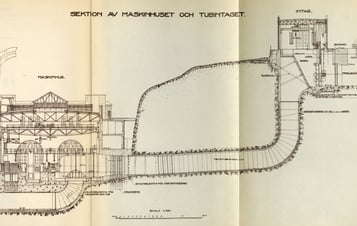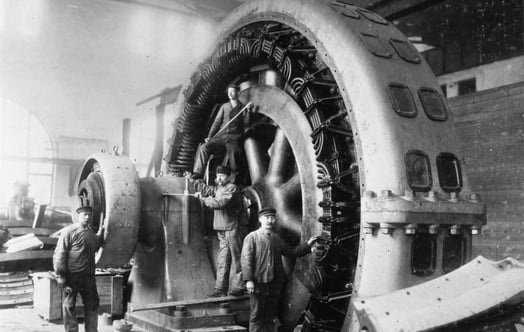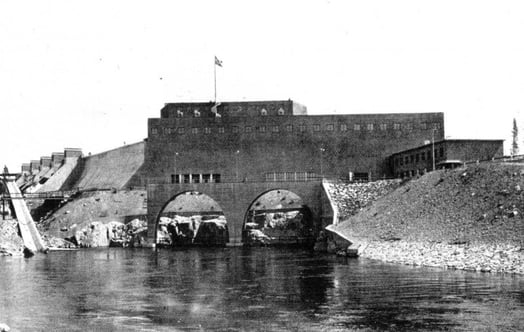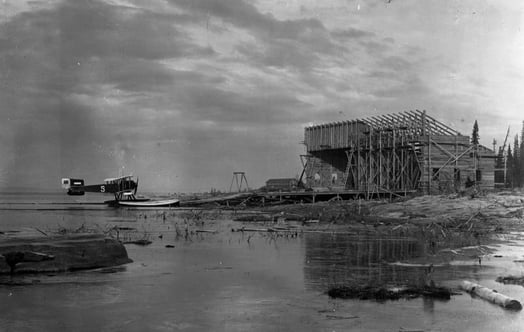
The pioneer power stations
Emerging industry and railways played a major role in determining the location of Vattenfall's first hydropower plants. Over the course of a few years three gigantic, for that time, and architecturally fascinating plants were built at Trollhättan, Porjus and Älvkarleby, Vattenfall's pioneering plants.
Construction of Olidestationen, the Olidan power plant, at the Trollhätte falls began even before Kungliga Vattenfallsstyrelsen was formed in 1909. The first blast was detonated in June 1906, and the power plant was in regular operation by March 1910. At that time, it was Sweden's largest hydroelectric plant. The Olidan plant was built with penstocks embedded into underground rock tunnels, which was unusual at the time. There were several reasons for this, but one reason was that they did not want to spoil the beautiful surroundings and the special landscape in which the plant was built.
The Olidan plant was a technical and commercial success for the state. It was decided, therefore, that the state would own resources and produce hydropower itself in future, rather than lease it out to other operators, as previously discussed. The same year that Olidan was commissioned, the Swedish parliament granted Vattenfall money to construct a power station at Porjus, north of the Arctic Circle.
Video player requires marketing cookies.
To view this content please click here to allow marketing cookies.
Hard times in northern Sweden (in Swedish)
In many ways, it was a bold decision. Porjus was to be built in the middle of the northern wilderness and would be the northernmost power plant in the world. But Norrland was also considered as something of a promised land, as it was rich in iron ore and potential for hydropower.
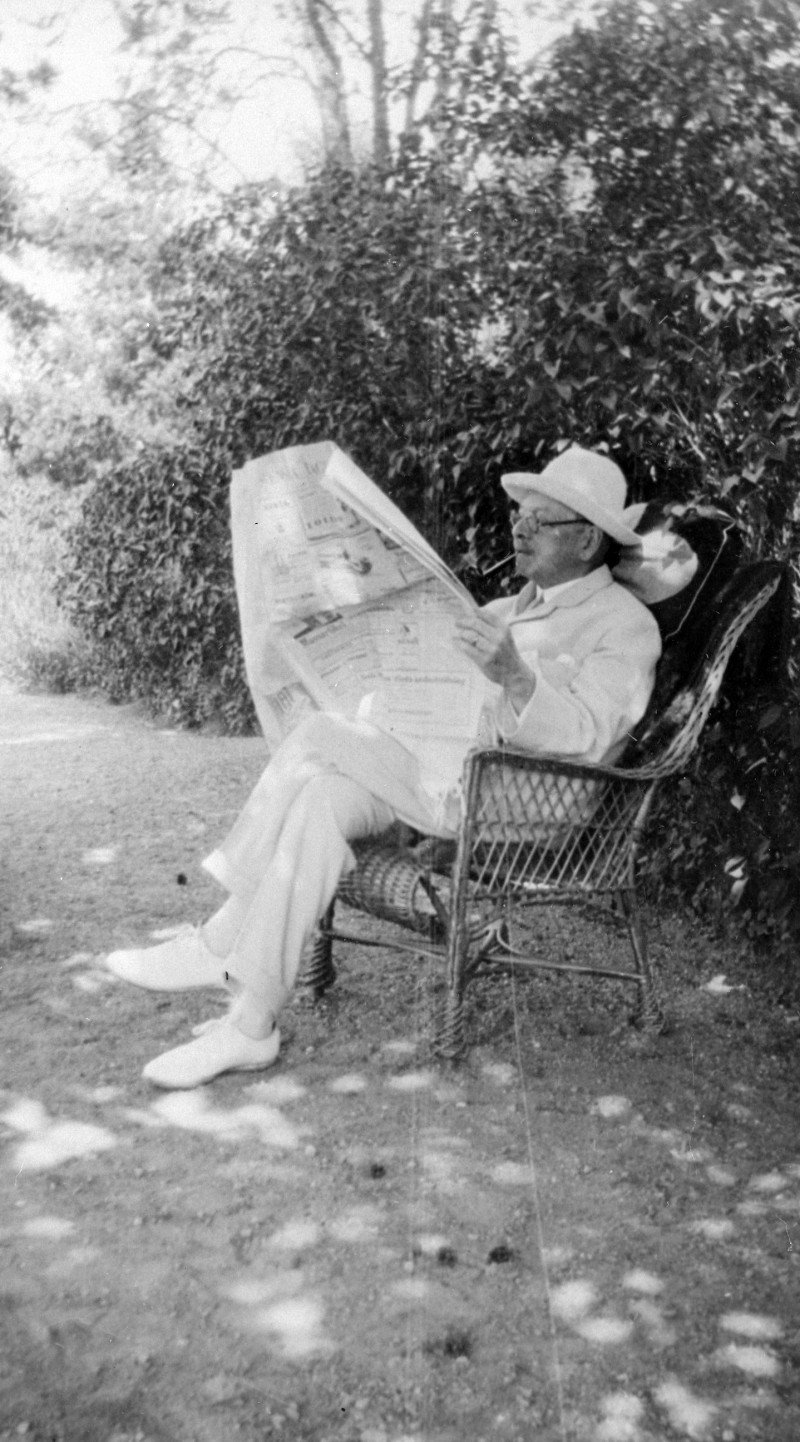
Vilhelm Hansen. Director general of Vattenfall 1909-1928. Year: 1929 | Place: - | Creator: Vattenfall | ID: VF000014
The main purpose of the Porjus plant was to supply the ore railway between Luleå and Narvik with electricity. This would be the first long railway line in Sweden to be electrified. Statens Järnvägar, the Swedish state railway, had plans itself to construct a significantly smaller hydropower plant along the Vakkokoski rapids in the Torne River. But Vattenfall's dynamic manager Vilhelm Hansen argued his case energetically in parliament. Hansen didn't just base his arguments on the ore railway. A plant in Porjus would also open the way for new industry. The ore needed to be processed before it could be exported.
Underground hydropower stations - a Swedish speciality
The Porjus power plant was an exceptional construction. It was built underground with headrace and tailrace tunnels, and hence the machine hall was also underground. It was an enormous size for its time. The hall was 70 metres long, 11 metres wide and 11 metres high. Underground construction would subsequently be used in many other later projects, both by Vattenfall and private power companies. Underground power stations became internationally recognised as a Swedish speciality.

Porjus power plant dam. The southern part at high water. Year: 1914 | Place: Porjus | Creator: Vattenfall | ID: VF000015
Porjus went into operation in 1914 and the ore railway was electrified the following year. That year also saw Vattenfall's third hydroelectric plant commence operation – in Älvkarleby. Planning for this power plant assumed that its largest consumer would be industry. There were many important industries north and west of Älvkarleby where steam was the driving force and could be replaced by electricity.
Monumental architecture
All three power plants – Olidan, Porjus and Älvkarleby – were designed by the era's most in demand architect: Erik Josephson. The buildings were of brick and the 'monumental style', with huge volumes, was intended to reflect their power. The switchgear buliding at Porjus, which was above ground, was not called the temple in the wilderness for nothing. Josephson was otherwise better known as an architect of banks and shopping centres. But he also designed the Defence Staff building at Östermalmsgatan in Stockholm and the Grand Hotel in Saltsjöbaden. Josephson was, incidentally, also the person who designed Vattenfall's very first emblem or logo.
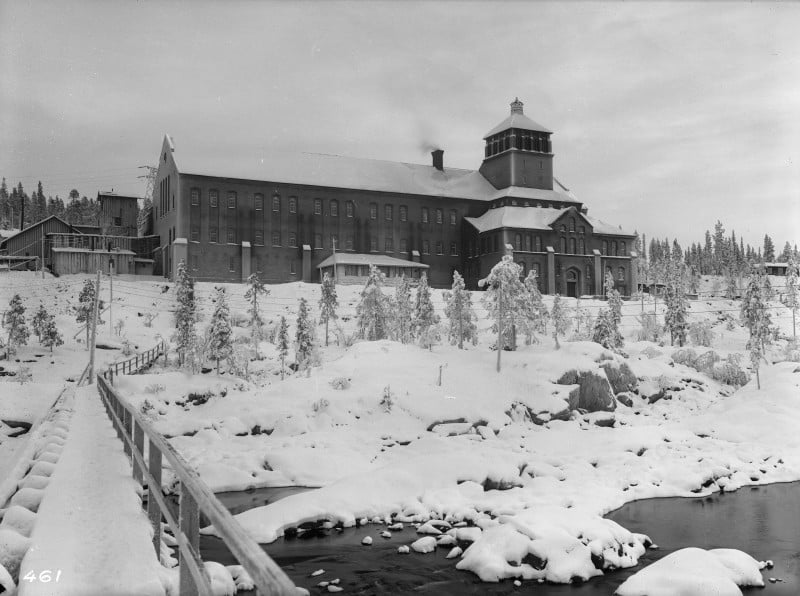
Porjus power plant. Called the temple in the wilderness. Year: 1914 | Place: Porjus | Creator: Ludvig Wästfelt | ID: VF000017
The lighting at Porjus was also special, as many people worked underground. There were lots of electric light bulbs. The fittings for the control room were commissioned from craftswoman Olga Lanner. She also supplied the fittings for Olidan and Älvkarleby. The switchgear building at Porjus attracted a great deal of attention when it was built, but was close to being demolished in the 1970s. However, Vattenfall's CEO at the time, Jonas Norrby, put a stop to that. Today the power plant is listed as a historic building.
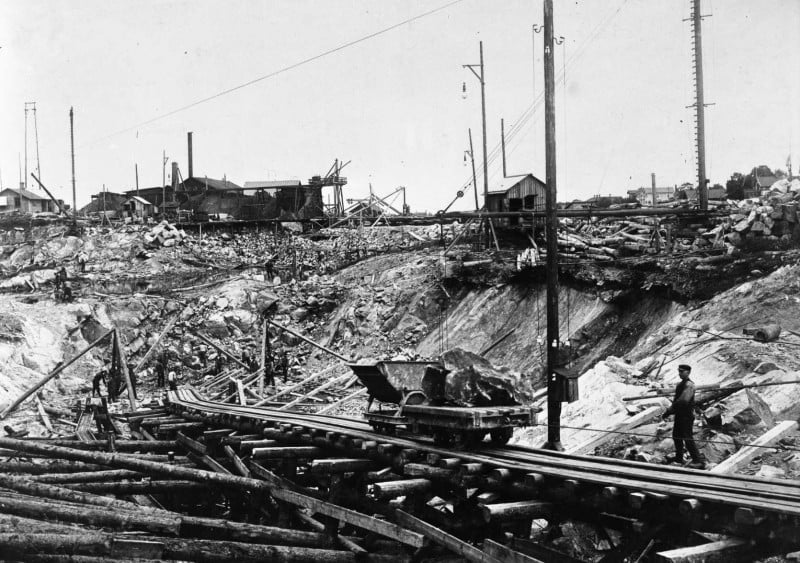
Olide power plant under construction. At the time, Sweden's largest hydroelectric plant. Year: 1906 | Place: Olidan | Creator: Vattenfall | ID: VF000013
Related media
Video player requires marketing cookies.
To view this content please click here to allow marketing cookies.


